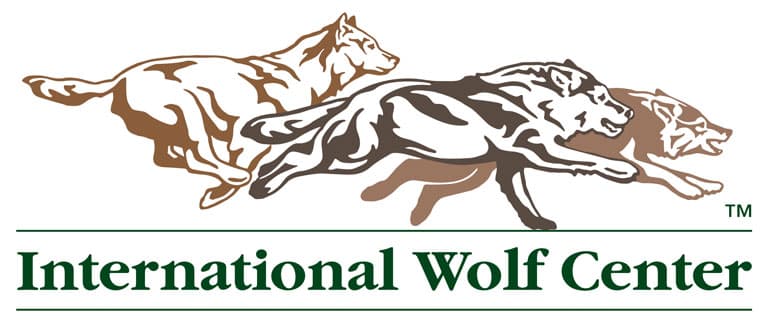From AdirondackExplorer.org:
As New York readies its 10-year State Wildlife Action Plan (SWAP), some wildlife advocates are pointing out a key omission: Wolves.
A group of 13 organizations that includes local, state and even international organizations sent a letter on Sept. 19, a day before the comment period ended for the most recent draft of the SWAP. Part of a consortium known as the Northeast Wolf Recovery Alliance, which formed in 2023 two years after a canid killed by a hunter near Coopertown was determined to be a wolf.
Click here for the full story.

Wolves still fear human ‘super predator’ even in protected areas
From Yahoo.com:
Wolves remain fearful of humans even in areas where they are protected, according to a study published on Thursday in the Current Biology journal.
The study finds that the predators deliberately avoid human proximity, even in areas where they face little direct threat due to protective measures.
An international research team led by wildlife ecologist Liana Zanette from Western University in the Canadian city of London observed wolves in a large area of Poland.
Click here for the full story.
Wolves return: How to keep [EU] livestock safe?
From EurekAlert.org:
Research team investigates farmers’ willingness to implement options to protect grazing animals on pasture.
Click here for the full story.
Wolf population in Finland jumps 46 percent, prompting renewed hunting debate
From HelsinkiTimes.fi:
Finland’s wolf population has grown sharply over the past year, reaching its highest level in decades. The Natural Resources Institute Finland (Luke) estimates that as of March 2025, the country had approximately 430 wolves, a 46 percent increase from the previous year.
Click here for the full story.
Wild Dogs Follow Familiar Routes When Traveling, Unlike Free-Spirited Wild Cats That Explore New Places
From DiscoverMagazine.com:
When it comes to navigating nature, dogs and cats have different game plans. While dogs tend to sniff around familiar spots, cats are more free-spirited and explore new places. The movement patterns of our pets run deep in their evolutionary history, highlighting the contrasts in how they traverse the great outdoors.
Click here for the full story.
Wolf attack in Greece prompts calls for hunting rights
Fro Phys.org:
Hunters and farmers in Greece are demanding the right to cull wolves after one attacked a child on a beach this month, warning that the protected species is multiplying in the wild.
Click here for the full story.
Study questions effectiveness of wolf hunting for livestock loss prevention
From VP-MI.com:
The logic goes: wolves kill livestock, so killing more wolves means less livestock loss. But researchers have found that’s not quite the case.
A new study published in the journal Science Advances analyzed wolf hunting across the western U.S. It determined hunting is not the most effective method for addressing livestock loss.
“You’d have to kill quite a few wolves in order to save one cow, on average,” says Leandra Merz, the paper’s lead author.
Click here for the full story.
6 hunting dogs killed, 2 injured in three separate wolf attacks in Langlade County [Wisconsin]
From WJFW.com:
LANGLADE COUNTY, Wis. (WJFW) — Three separate wolf attacks and killings of hunting dogs in Langlade were reported in a two-day stretch on Friday and Saturday.
According to a news release from the Wisconsin DNR, USDA-Wildlife Service confirmed two wolf attacks in the Town of Ackley near Antigo and another attack in Elcho resulting in a total of six hunting dog deaths.
Click here for the full story.
Political Whiplash Is Terrible for Wolves’ Future. But More Is Coming.
From InsideClimateNews.org:
After a judge lamented the “political yo-yo” process embroiling wolf management in the Northern Rockies, no one appears to know how to deescalate the debate.
Click here for the full story.
Western wolf update: Groups call for changes to [Colorado] wolf reintroduction policy
From WYLR.net:
Wolf reintroduction has been a topic of tension in Colorado and surrounding states since 2020. Recently, two separate citizens’ petitions have been filed in Colorado calling for a reevaluation of wolf policy. One recommends delaying reintroduction efforts until 2026, while the other calls to put an end to wolf reintroduction entirely.
Click here for the full story.
Coalition pushes [New York] state to include wolves in updates to conservation plan
From AdirondackExplorer.org:
As New York readies its 10-year State Wildlife Action Plan (SWAP), some wildlife advocates are pointing out a key omission: Wolves.
A group of 13 organizations that includes local, state and even international organizations sent a letter on Sept. 19, a day before the comment period ended for the most recent draft of the SWAP. Part of a consortium known as the Northeast Wolf Recovery Alliance, which formed in 2023 two years after a canid killed by a hunter near Coopertown was determined to be a wolf.
Click here for the full story.